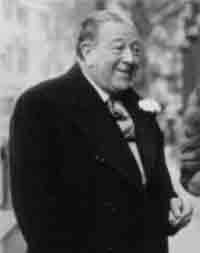Antoine Seilern
| Count Antoine Seilern | |
|---|---|

Antoine Seilern
|
|
| Born |
Count Antoine Edward Seilern und Aspang 17 September 1901 Frensham Place, Farnham, Surrey, England |
| Died | 6 July 1978 South Kensington, London, England |
| Nationality | British |
| Other names | Antoine Edward Graf Seilern und Aspang; Anton Seilern |
| Occupation | art collector and art historian |
| Known for | bequest of art works to the Courtauld Gallery |
Count Antoine Seilern (17 September 1901 – 6 July 1978) was an Anglo-Austrian art collector and art historian. He was considered, along with Sir Denis Mahon, to be one of a handful of important collectors who was also a respected scholar. The bulk of his collection was bequeathed to the Courtauld Institute of Art and most is on display at the Courtauld Gallery in London.
Count Antoine Edward Seilern und Aspang was born on 17 September 1901 at Frensham Place, Farnham, in Surrey, England. He was the youngest of the three sons of Count Carl Seilern und Aspang (1866–1940) and the American heiress Antoinette "Nettie" née Woerishoffer (1875-1901). He therefore enjoyed citizenship of both Austria and the United Kingdom. His ancestors had been ennobled after successful involvement with the Pragmatic Sanction of 1713. His father's sister Ida was married to Phillip Hennessy, whose sister Nora was the wife of the Royal Academician Lord Methuen.
He had two older brothers, Count Charles Hugo ("Chappie"), born 1899, and Count Oswald Seilern, born 1900. His mother died five days after he was born. Thereafter the three Seilern boys divided their time between their grandmother, Anna Woerishoffer, in New York City, and their father in London and Vienna, in the company of nannies and governesses (and frequently chaperoned by the Swiss-born American artist Adolfo Müller-Ury), though until America entered the First World War Mrs Woerishoffer spent 1912 to 1916 with her grandsons in Vienna. Anna Woerishoffer's wealth derived mainly from the German-language New York newspaper, the Neue-Yorker Staats-Zeitung, and her late husband's success on Wall Street. Seilern, like his older brothers, grew up with a passion for horse-racing and shooting.
After the First World War Seilern relinquished his Austrian citizenship. However, despite this, he graduated in 1920 from the Realgymnasium in Vienna before attending the Wiener Handelsakademie (1920–1921) and then, at the start of 1922, he enrolled at the Technische Hochschule in order to study for an engineering certificate until 1924. He then worked briefly for a Yugoslavian lumber company, and in Vienna in finance.
...
Wikipedia
